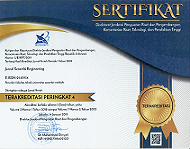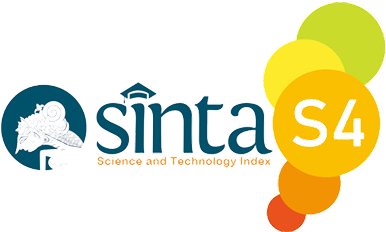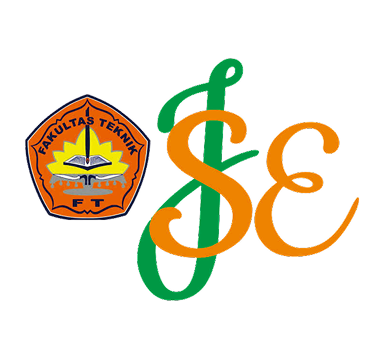Ekstraksi Silika Berbahan Dasar Coal Fly Ash Menggunakan Natrium Hidroksida
Keywords:
Fly Ash, konsentrasi hcl, waktu ekstraksi, Natrium Hidroksida, abu terbangAbstract
The presence of fly ash waste will have a negative impact on the environment so that it is necessary to handle it by utilizing fly ash waste. Silica purification by extracting silica from coal fly ash aims to minimize the levels of unnecessary metal oxides (impurities). This study aims to determine the characteristics of silica produced from fly ash waste, determine the best extraction conditions to produce silica and determine the effect of extraction pH on the silica produced. Silica extraction includes several processes including leaching, extraction, and precipitation. In this study, the manufacture of silica gel begins with washing fly ash with HCl. Silica is extracted using 3M NaOH with time variations of 100 minutes, 120 minutes and 140 minutes. Furthermore, the silica in the filtrate is precipitated with 1M HCl with a pH range of 3.4, and 5 and an aging process of 18 hours and dried using an oven and characterized with an XRF instrument. The results of this study indicate that the closer to neutral the addition of HCl pH used, namely 5, the higher the mass of silica from the extraction obtained up to a maximum at an extraction time of 120 minutes with a silica yield of 63.42%. Extraction with a time of 100 minutes and 140 minutes showed that the mass of silica from the extraction obtained was lower along with the increasing acidity of the addition of HCl. The results of the water content test obtained 1.53% and ash content of 9.345% of the silica produced met the requirements of the Indonesian National Standard (SNI) No. 06-2477-1991.
References
[1] A. J. Van der Merwe et al., “Characterisation of coal fly ash for beneficiation applications,” J. Environ. Manage., 2014.
[2] R. S. Blissett et al., “Properties of fly ash from co-combustion of biomass and coal,” Fuel, 2012.
[3] BAPPENAS, Laporan Tahunan Produksi Batubara Nasional, Jakarta: Badan Perencanaan Pembangunan Nasional, 2019.
[4] BAPEDAL, Dampak Kesehatan Akibat Limbah Industri, Jakarta: Badan Pengendalian Dampak Lingkungan, 1999.
[5] Sukandarrumidi, Batu Bara dan Pemanfaatannya, Yogyakarta: Gadjah Mada University Press, 2009.
[6] R. K. Iler, The Chemistry of Silica, New York: Wiley, 1978.
[7] Muchjidin, Kimia Pemanfaatan Batubara, Yogyakarta: Universitas Gadjah Mada, 2006.
[8] W. A. Wardhana, Limbah Industri dan Pengelolaannya, Yogyakarta: Andi Offset, 2006.
[9] U. Kalapathy, A. Proctor, and J. Shultz, “An improved method for production of silica from rice hull ash,” Bioresour. Technol., vol. 73, no. 3, pp. 257–262, 2000.
[10] U. Kalapathy, A. Proctor, and J. Shultz, “A simple method for production of pure silica from rice hull ash,” Bioresour. Technol., vol. 79, no. 3, pp. 205–211, 2002.
[11] R. Prasad and M. Pandey, “Optimization of silica extraction from rice husk,” J. Hazard. Mater., vol. 217–218, pp. 431–438, 2012.
[12] X. Wang et al., “Silica extraction from coal fly ash: Optimization and mechanistic study,” J. Clean. Prod., vol. 412, 2024.
[13] J. Ma et al., “Characterization of desilication product in aluminosilicate residue,” Miner. Eng., vol. 145, 2020.
[14] Harimu, “Pengaruh Konsentrasi NaOH terhadap Ekstraksi Silika dari Fly Ash,” Jurnal Teknik Kimia Indonesia, vol. 6, no. 2, pp. 45–52, 2019.
[15] Meidinariasty, L. N., Fajriani, L., and Ramadhan, A. M., “Sintesis Silika Gel dari Sekam Padi melalui Ekstraksi Basa dan Pengendapan Asam,” Jurnal Teknologi Kimia dan Industri, vol. 10, no. 1, pp. 11–19, 2020.
[16] Caroles, R. P., “Optimasi Ekstraksi Silika dari Abu Sekam Padi Menggunakan Metode Sol-Gel,” Jurnal Teknologi Material, vol. 8, no. 3, pp. 33–40, 2019.
[17] Mujiyanti, E., “Pemanfaatan Fly Ash sebagai Sumber Silika: Studi Degradasi Natrium Silikat,” Jurnal Kimia Terapan, vol. 5, no. 1, pp. 22–27, 2021.
[18] Purnomo, A., “Analisis Kadar Air dan Abu pada Fly Ash untuk Aplikasi Bahan Bangunan,” Jurnal Riset Material dan Energi, vol. 4, no. 2, pp. 66–71, 2022.
[19] T. Hidayat, Standar SNI dan Aplikasinya dalam Industri, Bandung: Balai Besar Keramik, 2016.
Downloads
Published
Issue
Section
License
Copyright (c) 2025 M.Bagas Ikmal R, Mohammad Daffa, Nurul Widji Triana (Author)

This work is licensed under a Creative Commons Attribution 4.0 International License.












